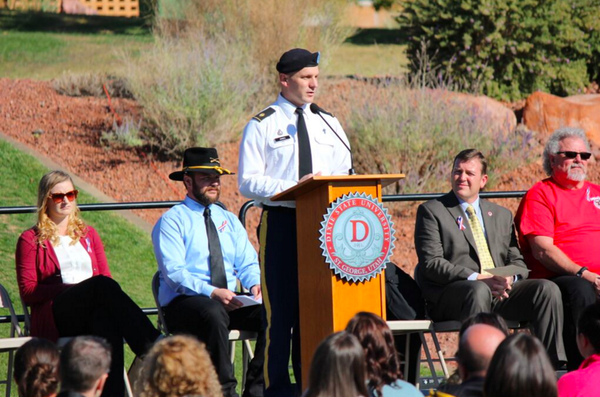Dixie State University is unveiling something shiny and something new very soon.
A fresher, cleaner new website has been in the works for the university since last summer. It’s expected to be finished early this summer, although an official launch date hasn’t yet been determined. The beta site, beta.dixie.edu, welcomes Web users with drone footage, large font and interactive graphics.
The new site, being designed in house by members on the web design committee, is being redesigned simply because the current site is out of date and Webmaster Rex Frisbey said it should be changed every one or two years.
Marketing Coordinator Jared Madsen said his role in the redesign was to make sure DSU’s branding guidelines were being followed. In addition, he said the new site will be a marketing tool before anything else.
Reassessing the purpose of DSU’s website is important when considering a redesign, said Rachel Ramsay, assistant professor of digital design. She said the new website is strong as a sales tool for external users.
“We use our current website as the central port for people to access a bunch of information, and it’s geared toward internal use,” Ramsay said. “It’s going to be really important to use [the new site] as an external sales tool.”
Ramsay and Madsen both said removing the cluttered homepage will improve usability.
“Instead of covering up the homepage with a huge super menu, what’s really nice about the [beta] is that it has paired [the menu] down and is turned into a nice, clean sales piece,” Ramsay said.
In addition to having a modern aesthetic appeal, the new site also boasts a new content management system and individualized portals, Frisbey said. The portals will serve as “homes” for information tailored to specific audiences.
Madsen said users will no longer be bombarded with messages that don’t apply to them. For example, an event specifically tailored to faculty and staff will appear on the faculty and staff portal only. If a message needs to be sent to current students only, the message will appear in the current students’ portal.
The new content management system will allow changes to be made more easily.
“The great thing about a digital space is that you can always continue to modify it,” Ramsay said. “The way the structure is in the new [site] is going to be easier to make those changes, so we can be more nimble if we do want to make a global change to colors or styles or if we need to make some modifications in regard to the brand identity.”
Challenges the design committee faced were mostly related to moving content from the old site to the new one, Frisbey said.
“I believe there were over 8,000 pages we had to go through and pull over,” Frisbey said. “Everything else seems to be going smoothly.”
The beta, in its current form, is nowhere near ready to go live, Madsen said. Individuals from the DSU community were asked to provide the committee feedback about the beta site. Although plenty of the feedback was helpful, Madsen said about 80 percent of the feedback they’ve received are issues the developers were already aware of.
The new site will also be proof the university is growing and is no longer just the small university in the southern end of the state, Ramsay said.
“[The site] is going to help us feel more grown up or show people how grown up we are,” she said.
Frisbey said there will always be complaints when rolling out a new website.
“It will be rough for the first little while because humans as a whole hate change,” Madsen said. “I think once [users] get it, dig in and start using it, they’re going to enjoy it.”




